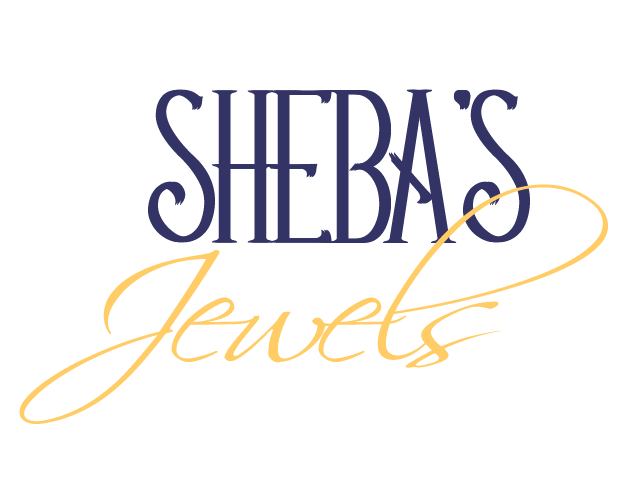Free Amharic Lesson
Free Introduction to Ethiopia
Here are some interesting facts about Ethiopia.
- Population: 111 million people (2021)
- Capital: Addis Ababa with 5 million inhabitants
- Name: Ityop’iya (Ethiopia). The country was referred to as Abyssinia previously.
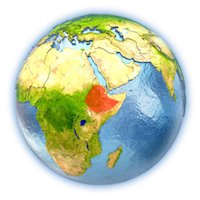
- Primary Language: Amharic
- Religion: predominantly Christian 61% (Ethiopian Orthodox 43% and Protestant 18%), Muslim 34%
- National Animal: Abyssinian lion
- National Colors: green, gold and red
- History: Ethiopia is the oldest independent country in Africa and the only African country that evaded colonial rule.
Ethiopia Map
On the map you can see the neighboring countries and the central location of the country’s capital city Addis Ababa.
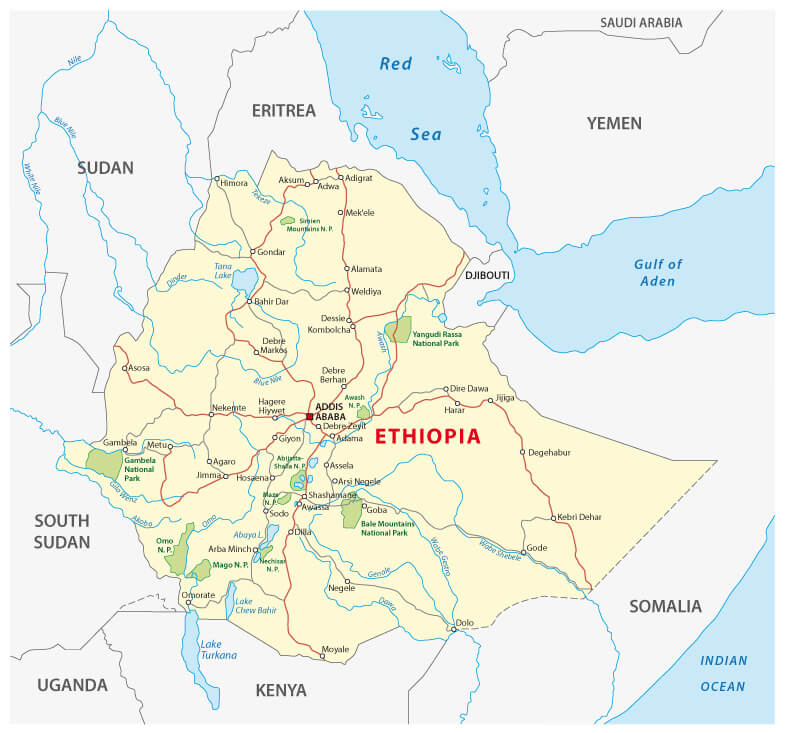
The country is located on the African continent in a central and eastern position on the Horn of Africa. Ethiopia is a landlocked country and its six neighboring countries are:
- Eritrea to the north and Djibouti to the northeast,
- Somalia to the east,
- Kenya to the south and
- South Sudan and Sudan to the west
Ethiopia Geography
Ethiopia is roughly twice as big as Texas/USA or five times the size of the UK.
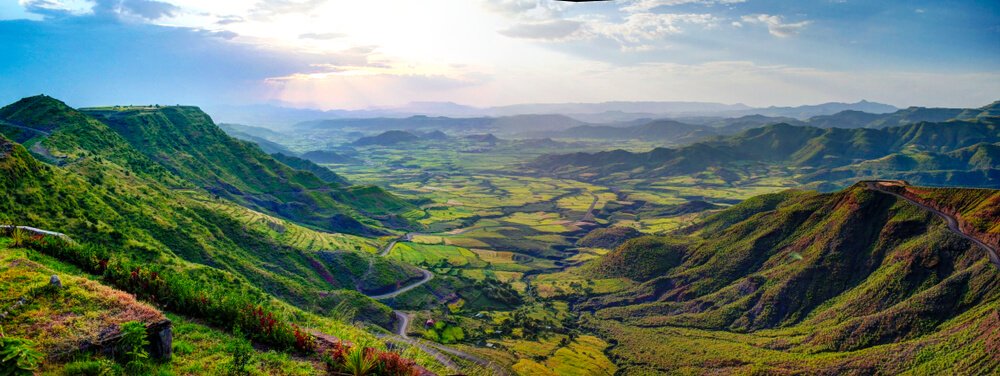
Great Rift Valley in Ethiopia
- Ethiopia’s highest point is Mount Ras Dashen, with 4,533 m or 14,872 ft. Mount Dashen is also one of the highest mountains in Africa.
- The lowest point in Ethiopia is the Danakil Depression which is 125 m/ 410 ft below sea level. This is the hottest place on our planet, considering the average annual temperature!
- Ethiopia’s longest river is the Blue Nile (which is called Abay in Ethiopia). Below you can see the mighty Blue Nile Falls.
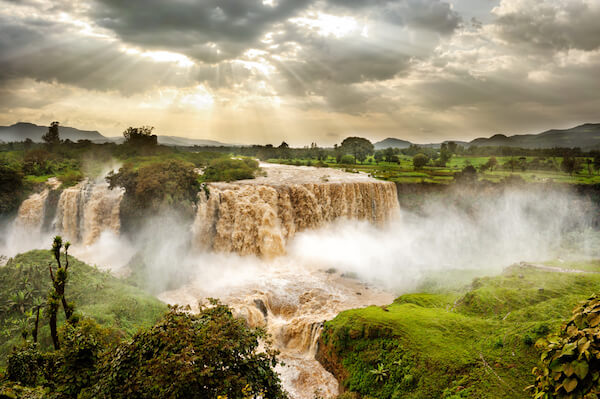
Blue Nile Falls
- Ethiopia is the second most populous country in Africa and also the most populous landlocked country in the world!
- There are eight UNESCO world heritage sites in Ethiopia with Simien National Park and the Lalibela rock-hewn churches the oldest acknowledged heritage sites in the country. Read about the heritage sites here.
Places to Visit
- Lalibela: The rock-hewn churches are probably the best known attraction of Ethiopia. Here eleven medieval churches were cut and carved out of rock. It is said they were built under King Lalibela who called them ‘New Jerusalem’ as at that time in the 12th century the Muslims had stopped the Christians from their pilgrimage to the holy land.
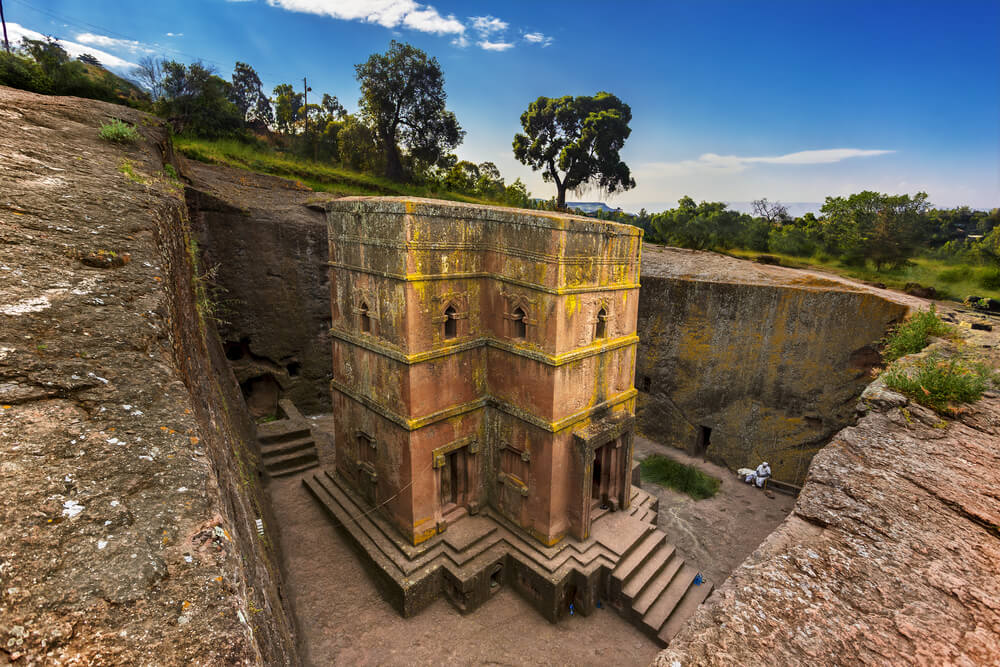
Lalibela – St George’s Church
- Addis Ababa: Ethiopia’s capital is a quickly growing city and the country’s largest city and main commercial center. The name in Amharic means ‘new flower’. In Addis Ababa you find the world’s largest market, as they say, it is called merkato. In the city you must also visit the National Museum, where there are the world’s oldest fossils of a hominid: Lucy, in Amharic called Dinkinesh. The bones were discovered in Ethiopia in 1974 and are thought to be 3.2 million years old.
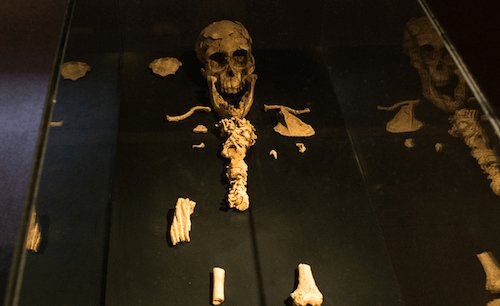
Lucy – the oldest ‘human’ fossil bones
- Omo Valley is home to several indigenous groups where traditions are upheld. The Omo River basin is one of the UNESCO world heritage sites due to fossil and tool finds that date more than 2.4 million years!
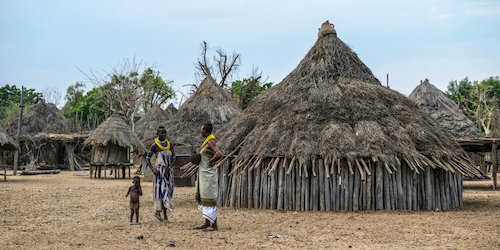
Karo people in the Omo Valley – image by Oscar Espinosa
- Gondar Castle: This building is also called Fasilides Castle as it was built by Emperor Fasilides in the 17th century. Gondar was then an important agricultural and trade center in Ethiopia.
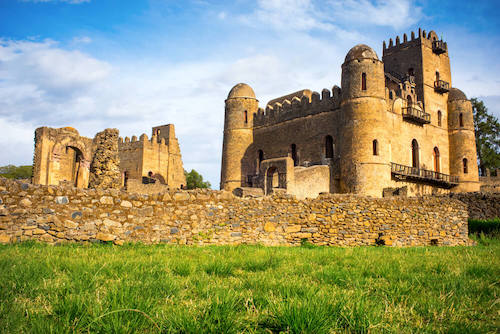
Gondar Castle
- The Blue Nile Falls is one of Ethiopia’s big attractions and are a must visit when in Bahir Dar, one of Ethiopia’s biggest cities.
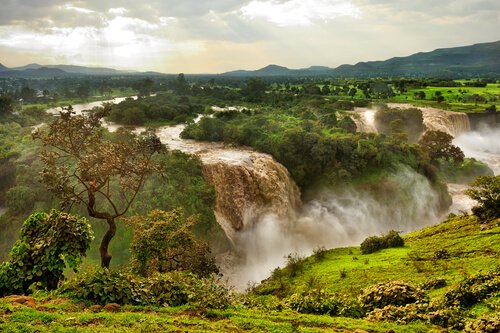
Blue Nile
- Simien Mountain National Park: This national park in northern Ethiopia offers breathtaking views of the highland landscape. The plateau with mountain peaks up to 3,600 m/ 11,800 ft are quite a contrast to the much lower escarpment as there are steep cliffs and canyon-like gorges.
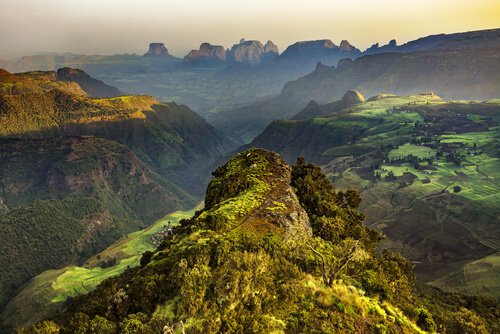
Simien Mountain National Park
Languages in Ethiopia
Amharic is the main working language in Ethiopia, as there is no official language. More than 80 languages are spoken in Ethiopia! Local languages are taught in schools and also used in official communications.
Amharic, Oromo and Somali are the most widely used local languages. English is taught as first foreign language in schools.
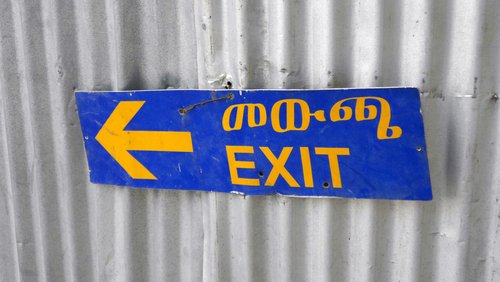
However, many people do not only speak their local language, but also English, French and Arabic are widely spoken.
Amharic is an ancient writing system. The smallest unit/letter in the writing system is called Fidel and each character consists of a consonant and vowel sequence.
Food in Ethiopia
Coffee, beans, oilseeds, sugar cane, corn and cereals are the main agricultural products in the Ethiopia.
Ethiopian main dishes contain vegetables and spicy meat stews and sauces – and flatbread which is called injera.
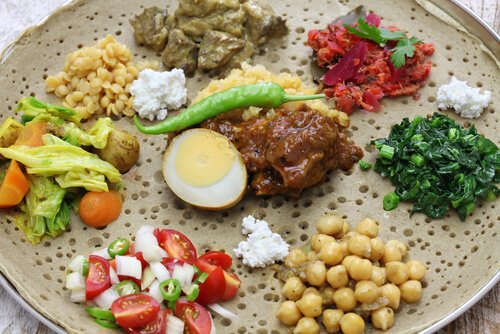
Ethiopian food: injera and sauce dips
Here are some typical Ethiopian food and dishes:
- Injera: large sourdough flatbread – usually made with teff flour. Teff is a Ethiopian cereal or grass. Injera is usually served with any meals
- Tips: sautéed and fried meat and vegetables
- Kitfo: minced raw beef meat that has been marinated in spices
- Wat: sautéed onion and spices mixed with vegetables or meat
- Genfo: porridge usually made with wheat or barley and traditionally eaten for breakfast
Ethiopia Animals
Ethiopia is home to many rare and endangered animals and plants. Unique to Ethiopia are the mountain nyala and the Simien jackal. The country is also known for its communities of black and white colobus monkeys and the gelada baboons.
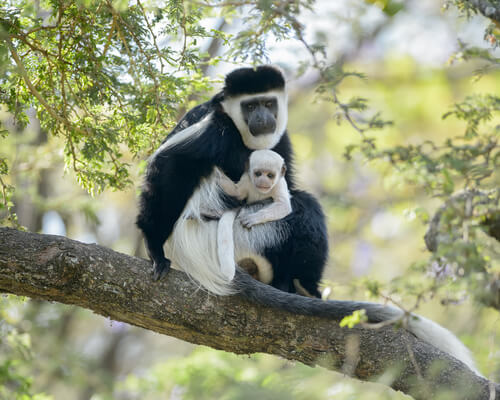
Black and white colobus monkey with baby
In the lowlands many antelope species, wild pigs and monkeys roam freely. In Ethiopia there are more than 20 national parks and game reserves where animals are protected.
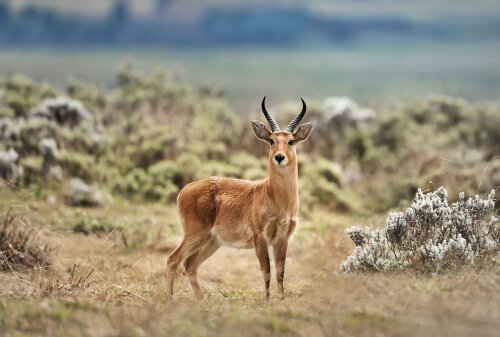
Reedbuck in Ethiopia
Did you know…?
Abiy Ahmed is the Prime Minister or Head of State of Ethiopia since April 2018. On 11 October 2019 he was awarded the Nobel Peace Prize.
The Chief of State or President of Ethiopia is Zewde Sahle-Work, who is the only female president in Africa! She was voted by parliament unanimously in October 2018.
The African Union has its headquarters in Addis Ababa.

